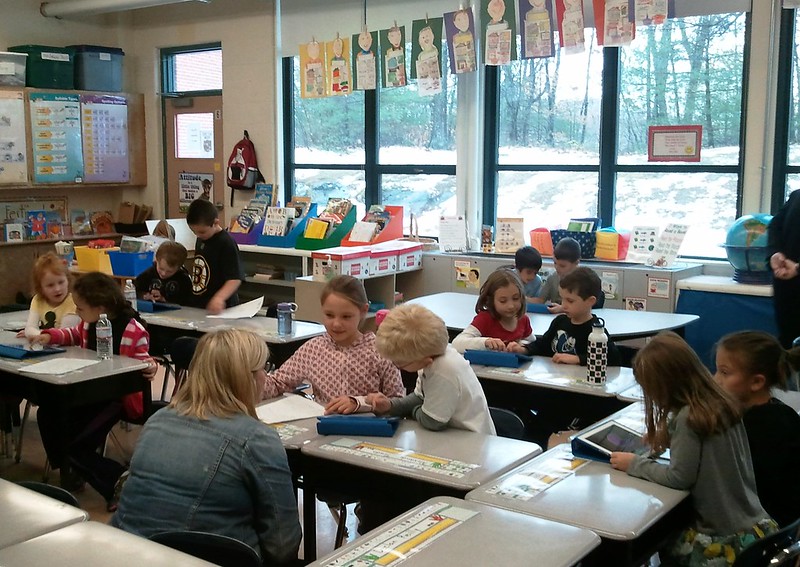 |
| Photo Credit to Swaminathan on Flickr |
Focus Question: How can teachers and students use digital portfolios as tools for learning?
Digital portfolios as defined by the text are:
Since these portfolios are interactive and much more accessible than paper portfolios, they provide a greater opportunity for teacher and students to expand on the classroom material in a much more thorough and deeper understanding. Digital portfolios allow teachers to share more about themselves and their lessons in a way that administrators, fellow teachers, parents and students can attain. By incorporating digital portfolios into the classroom, the teacher allows the students to explore their creativity and technological genius to reflect the lessons learned. While there are disadvantages that relate to the technological knowledge and accessibility of the user, I believe the advantages outweigh these possible deterrents."a collection of educational materials stored in an electronic format such as CD-ROM, website or computer file (p. 309)."
The following video below is an example of a digital portfolio and how it can be used as one's self-reflection. The creator of the video was able to incorporate the classroom and activities done throughout the year while also expressing their creativity.
Tech Tool Link: Online Survey Building Resources: Poll Builder
Poll Builder is a really neat website where you can create a free and simple poll. As a teacher I could use this on my classroom page to incorporate technology and the subject matter. In order to build the poll you just have to set up a username and password, and the rest is so simple. Using this tool, a teacher can create an anonymous questionnaire or survey to gather data on their students and their progress. I created the poll below as an example of how a teacher can incorporate this technology into their classroom.
Summary & Connection:
There are certainly many ways in which technology can be used to engage teachers and students in learning and self-reflection. Teachers can assess not only student performance but their performance as well. Technology can help teachers and administrators organize and track the progress of students in a more organized and precise fashion. Digital portfolios are a way for teachers and students to promote the progress they've made throughout the year as well as reflect on the experience and lessons they've learned. Digital portfolios are a successful way to encourage students to explore their creativity while gaining more experience with technology. Participation systems are another great use of technology to engage and encourage students in the classroom. By incorporating polls and surveys, teachers can better assess how their students are doing and absorbing the knowledge being presented to them. For me, what is important to remember is that today's technology offers many ways for teachers and students to improve their experience in the classroom. Although I can become a bit intimidated by new technologies, this text and class has made me realize that they can be extremely beneficial. I guess when faced with a seemingly daunting technological task I can always remember what President Theodore Roosevelt said, "it is hard to fail, but it is worse never to have tried to succeed."
It is hard to fail, but it is worse never to have tried to succeed
Read more at http://www.brainyquote.com/quotes/quotes/t/theodorero103482.html#37RhDQfftqDQAAfb.99
Read more at http://www.brainyquote.com/quotes/quotes/t/theodorero103482.html#37RhDQfftqDQAAfb.99
Resources:
Maloy, Robert, Verock-O’Loughlin,Ruth-Ellen, Edwards, Sharon A., and Woolf, Beverly Park (2011). Transforming Learning with New Technologies. Boston, MA: Pearson Education, Inc. ISBN:10 0-13-159611-X, ISBN:13 978-0-13-159611-5
 |
| Photo Credit to Adam Melancon on Flickr |

